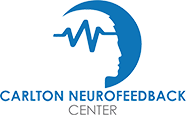
Frequently Asked Questions About Neurofeedback
How do I get started?
First, call our office at 703-335-9149 to set up an initial appointment which is free. Once in our office, we’ll ask that you fill out an online questionnaire that takes about 20 minutes. Dr. Carlton will review your questionnaire results with you, and then discuss your concerns, symptoms, and determine whether neurofeedback training may be appropriate for your unique situation. He will also answer all of your questions and give you the perspective of someone who has gone through the experience personally. If you decide to continue, the next appointment will be a brain map or qEEG, the evaluation used to set up a protocol to address the symptoms you are experiencing. From there, 30 minute neurofeedback training sessions are typically done twice a week for the protocol itself.
Do I need a brain map or qEEG?
Yes. If you are planning to take advantage of neurofeedback, an initial brain map or Quantitative Electroencephalogram (qEEG) is used as a kind of “fitness evaluation” and is analyzed so a personalized training protocol can be established. It involves wearing a cap with sensors and takes about 30 minutes. It measures and assesses the four types of brainwaves and compares it to a database of other brainmaps, so we can see what areas of your brain may be helped by bringing them into balance.
What does a typical neurofeedback session look like?
After the brain map or qEEG has been completed, we will work together to schedule a protocol for what may help you with the symptoms you are experiencing. Most appointments last about 30 minutes and involve a relaxing session watching a video while wearing a few electronic leads, headphones and a specialized set of photic-entrainment glasses.
Basically, how does neurofeedback work?
In a nutshell, after your brain map is complete, it is analyzed and compared to a large database of other brain maps so we can determine what areas need to be placed back in balance. This data is then used to set up your neurofeedback training sessions with our specialized equipment. By using audio/visual input, your brain is gently trained to stay focused. If it goes “out of bounds,” the audio/video will dim slightly which attracts your brain’s focus, bringing it back into balance again. Over time, the brain learns to stay focused naturally, setting up better thought patterns that stick around – thereby eliminating or greatly reducing the brain-based symptoms you may be experiencing. See a longer blog post on Neurofeedback.
Will neurofeedback therapy change my personality?
No. Neurofeedback training sessions are designed to help your brain’s connections communicate more efficiently, and stay balanced. It can make you calmer, more resilient to stress, and more clear headed. It will not change your hobbies, interests, or who you are.
Will I notice a difference right away?
Most patients notice positive changes after 6-8 sessions, normally done over 3-4 weeks. Some patients have told us that they have noticed differences after the very first session.
Are neurofeedback session results long lasting?
Yes. In the same way you learned a new skill like driving a car, our patients finish their treatment regimen and do not typically need to return. However, some people opt to continue periodically as a “tune-up” or return later on to address new challenges.
Does brain mapping or neurofeedback training sessions interfere with current medications?
No. We encourage you to continue taking any medications recommended by your physician. Over time, we will work with you and your prescribing physician to determine if you may be able to reduce or eliminate medications, based on your results.
Are there any side effects reported for neurofeedback?
No. In the 40 plus years that neurofeedback training has been available, no side effects have ever been reported.
Is biofeedback the same as neurofeedback?
Neurofeedback is a more specialized type of biofeedback. Biofeedback refers to a training technique where a person learns to regulate certain body functions, such as heart rate, blood pressure, or in this case, brain wave patterns. Neurofeedback can also be called neurotherapy, neurobiofeedback, and EEG biofeedback.
What types of patients do you treat?
We treat children ages 6 and older and adults who are seeking relief from ADD/ADHD, anxiety, autism, bipolar disorder, concussion or brain injuries, depression, insomnia, migraines, PTSD or trauma, seizures or epilepsy, and for those wanting to improve their performance, or handle stress better.
Do you take insurance?
Health insurance will not cover brain mapping or qEEG and neurofeedback training. However, we offer no interest financing, and accept payments from Health Savings Accounts (HSA), Flexible Savings Accounts (FSA), Medical Savings Accounts (MSA), and the Care Credit healthcare credit card.



